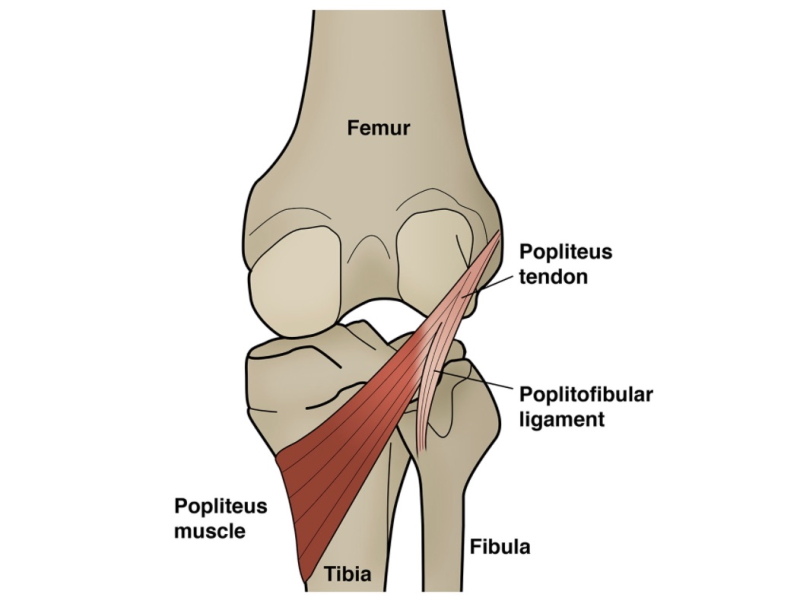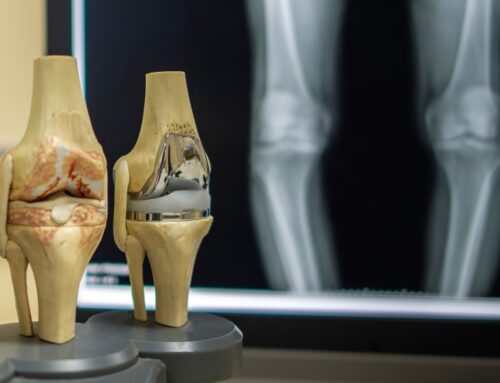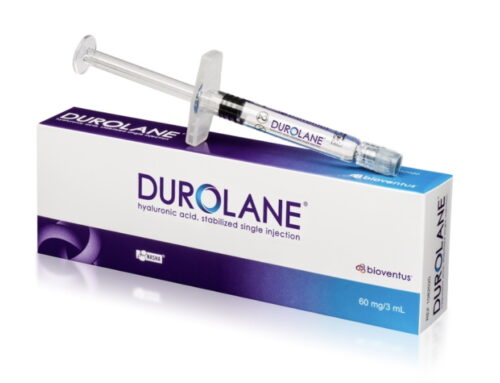Popliteus tendinitis, also known as popliteus tendonitis or tenosynovitis, is a rare cause of pain in the back and outside of the knee. Generally, this condition is poorly understood and misdiagnosed as other problems, such as ligament or cartilage injuries. So, what is the popliteus tendon, and how do we detect popliteus tendinitis?
Anatomy

The popliteus tendon starts outside the knee, attaching to the thigh bone (femur) and the lateral meniscus. Then, it passes down and forms a muscle across the back of the knee to insert into the leg bone (tibia). Generally, its main action is to rotate the leg. The popliteus muscle rotates the thigh outwards and ‘unlocks’ the knee when running.
Popliteus tendinitis symptoms

Generally, people can damage their popliteus tendon after a knee twist or overuse. The tendon can also be injured after a total knee replacement.
Usually, people with popliteus tendinopathy feel pain at the back or outside of the knee during walking, stairs, and running. Sometimes, movement of the knee can cause a popping sensation. In addition, the knee can be tender to touch at the back and the outside. Also, a particular test called the ‘Garrick’ test reproduces the knee sensation.
MRI popliteus tendinitis
In general, we order tests to confirm the diagnosis of popliteus tendonitis. MRI is the most useful in showing tendon swelling, tenosynovitis, or tearing. We also use MRI to rule out other causes of pain at the back of the knee, such as cartilage or meniscal tear. Also, ultrasound can be used to see the changes in the popliteus tendon.
Treatment of popliteus tendinitis
Generally, we start with simple treatments for popliteus tendinitis. Firstly, we recommend that people reduce or stop running. Secondly, anti-inflammatory treatments such as ice and ibuprofen tablets can help.
Exercise therapy or rehab is essential to improve the function of the knee. We start by strengthening the buttock muscles, such as the gluteus medius. Then, we focus on exercises to strengthen the knee’s rotation using bands for resistance. Finally, forward, backwards, and sidestepping on a step can improve the functional stability of the popliteus.
In cases that prove difficult to manage, an ultrasound-guided cortisone injection into the popliteus tendon sheath can reduce pain while running and help rehab. Generally, we perform injections with ultrasound to ensure we inject into the sheath but avoid the tendon. We reserve surgery for cases involving instability of the popliteus tendon or a tear of other structures (such as the lateral collateral ligament).

Final word from Sportdoctorlondon on popliteus tendinitis
Consider popliteus tendinitis if you have pain at the outside or back of the knee. Remember that twisting injury can damage the tendon and other vital structures at the back of the knee.
Related condition:
- Meniscal tear
- ITB pain
- Knee arthritis
- PCL injury
- Pain in the back of the knee
- Fibular head pain: possible causes








I spin regularly. I had pain in my knee and stupidity I continued exercising. I now have pain behind knee which really hurts when I try to bend the knee of lift leg up.